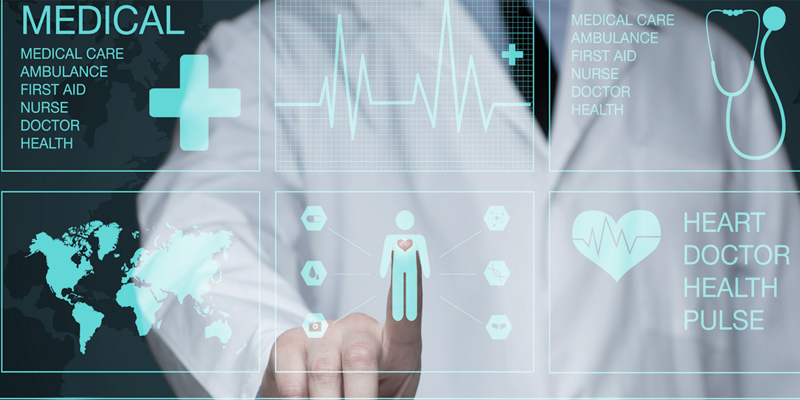THE EFFICACY OF WEARABLE TECHNOLOGY
The actual beginnings of wearable technology is one that is up for debate. Was it in 1472 when Leonardo da Vinci started counting steps? Or was it in 1788 with the creation of the Tomish Meter, the first pedometer created by Thomas Jefferson? How about 2003 with the release of the Vitatron C-Series fully digital pacemaker? This pacemaker gave medical experts the technology to download patient data in just 18 seconds.
This early innovation has created the boom we have today in wearable technology applications. Now, we’ve got more wearable applications than we ever thought we’d need or use. And this is exactly the issue plaguing the innovative wearable technology industry – need or use. Who needs this technology? How is it going to be used? Is it useful data?
A quick scan of the news swirling around wearable technology either heralds the breakthroughs of this evolutionary technology or it laments its demise. Like us, you’ve read the articles about how this technology can make our lives better. However, on the flipside, we’ve all read the articles about major companies laying off their wearable teams and walking away from future wearable innovation.
Leading the Change in Wearables
As innovators and ideation experts, this debate over the future of wearable technology is the best possible opportunity we could ask for. That’s right, the unknowns surrounding wearables opens doors rather than closes them. This is a chance to do something special with wearables – to take it beyond advanced step counting or sleep monitoring and reshape it to give real application to modern and future life.
For our human factors experts, the untapped potential of wearables gives them the chance to question and understand what people really want. Does the everyday person really want a band that measures steps? When does this data become irrelevant to daily life? What does knowing one’s heart rate mean to an individual who is not an athlete or doesn’t have a history of heart disease? Is this the problem – that we’re giving the wrong people this information?
These questions force our industry analysis team to really dig into where wearables can and might go next. Is it all going to be about smartwatches or will the evolutions of biosensor medical tattoos catch-on? How long will it take for advanced innovation, such as ink that reacts to changes in interstitial fluid, to become mainstream? What happens to this domain if companies lose interest and pull out investment? How does this impact the futures of university research teams dedicated to advancing practical medical wearable technology?
And what about regulatory compliance and industry regulations? Without regulations and guidelines in place, does this harm or help wearable innovators? What happens when regulations are created and enforced? Will this stall development or nudge it forward? Who should be taking responsibility for this critical area of wearable technology growth?
This is just a snapshot of the questions that drive us to continue to push forward with wearable technology. We haven’t even scraped the surface of asking about artificial intelligence and wearable technology or how augmented reality can be integrated into a wearable that then aids in recovery from PTSD or other trauma. Yes, there are lots of questions left.
The good that comes from this debate is the constant innovation that we get to see and experience. Innovation that most of the mainstream media overlooks because it is not yet in consumer format.
Wearable: The Need and The Use Enough of the questions, let’s look at some of the wearable technology that could make a difference.
- HDWear: A collaboration between Teva Pharmaceuticals, BioSenics, and Intel could change lives for people with Huntington’s disease. Huntington’s disease is a fatal neurodegenerative disease that results in uncontrollable movements, cognitive degeneration, and behavioral and psychological issues. Typically, these symptoms require in-hospital monitoring and assessment – however, travel for people with Huntington’s disease can be stressful and exhausting. With HDWear, medical experts could remotely monitor patients, removing one of the barriers to care and treatment. The companies are focused on a complete telecare solution that improves observation and assessment of Huntington’s disease, ultimately improving the lives of patients and families living with the disease.
- Smart Clothing for Premature Babies: This is a 2013 innovation that seems to have lost traction. An estimated 15 million babies are born premature, according to the World Health Organization. “This smart fabric protects the premature child in the very first hours after birth. It stops moisture being expelled from the child’s body before the baby is put into an incubator. The baby has to be examined first and then it is put in an incubator. This is the moment when excessive sweating has to be stopped,” says Ewa Skrzetuska, a researcher on the project.
- Dermal Abyss: Using advanced biosensors rather than standard tattoo ink, researchers at MIT and Harvard have collaborated to push the boundaries of medical monitoring. The biosensors measure the glucose levels and PH levels in the wearer’s interstitial fluid. “… It could be used for applications in continuously monitoring such as medical diagnostics, quantified self, and data encoding in the body.”
This is just a small snapshot that demonstrates the real tangible use and need for wearable technology. No, this is not the wearable technology that we see our friends and colleagues using – rather this is the next level of wearable technology.
To truly be useful and life-changing, wearable technology needs to think beyond everyday consumables and address the problems and challenges that can make a real difference. Disease monitoring, life-saving, real-time communication, and assessment – it’s up to us to take wearables to the next frontier.
This is no longer the stuff of science fiction.Wearable technology is not dead, it just needs to evolve in the right ways. This is what we do. Shaping, twisting, pushing, and bending ideas to find the real use and need – then we’ve got a project that can and will be a game-changer. This is true innovation. This is Radius.
RELATED CONTENT
RELATED EXPERTISE
RELATED INSIGHTS
RELATED PROJECT WORK
RELATED CAPABILITIES
WANT TO LEARN MORE?
Start a conversation with Radius to learn how we can help you take your Healthcare project to the next level.



